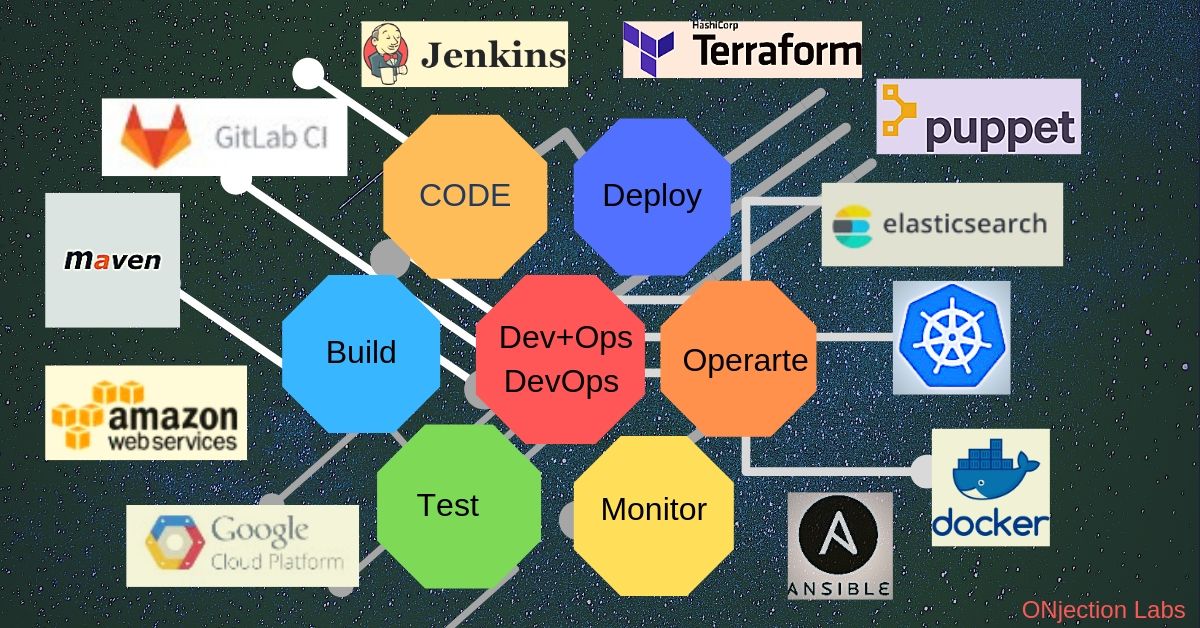· 5 min read · Plaintext Version
understanding the basics: DevOps 101
DevOps is a term that has been gaining a lot of popularity in recent years. But what exactly is DevOps? In its simplest form, DevOps is a set of practices and tools that help organizations...

Table of Contents
Key Takeaways
- DevOps bridges the gap between development and operations for faster, more reliable software delivery.
- Key principles include automation, continuous integration, continuous delivery, and shared team knowledge.
- Popular DevOps tools like Jenkins, Ansible, Docker, Kubernetes, and Prometheus support automation and monitoring.
- Adopting DevOps boosts collaboration, quality, and agility for both teams and organizations.
- Monitoring and measuring processes help teams spot issues early and improve user experience.
What is DevOps?
DevOps is a term that has been gaining a lot of popularity in recent years. But what exactly is DevOps? In its simplest form, DevOps is a set of practices and tools that help organizations to build, test, and deploy software faster and more efficiently. It is a way to bridge the gap between development and operations, allowing them to work together more closely and achieve a common goal: delivering software to customers as quickly and reliably as possible.
What are some key principles of DevOps?
One of the key principles of DevOps is to automate as much of the software delivery process as possible. This will include things such as automated testing, continuous integration, and continuous delivery. Teams can quickly and easily check for bugs and other issues in the code using automated testing, without having to manually test every single change. Integrating code changes from multiple developers into a single codebase on a regular basis becomes a breeze with continuous integration. This allows teams to catch and resolve conflicts early on, before they become major issues. Automatically building, testing, and deploying code changes to production is enabled by utilizing continuous delivery.
These practices, and the associated tooling which goes along with the implementation of them, allows teams to release new features and updates to customers more frequently and with less risk. Your teams can reduce the time it takes to deliver the same software, while also increasing the quality and reliability of the software.
Our teams should work together. Sharing knowledge and best practices to continuously improve our practices and processes, find out what works and what doesn’t, and ultimately feeding all of this back into improving the overall software delivery experience for our teams. By fostering a culture of collaboration and communication, teams can identify and resolve problems more quickly and effectively.
DevOps also encourages us to measure and monitor not just the way that the team is delivering, but also how the software delivery process itself is performing and the infrastructure that supports it. You should include the use of monitoring tools that can provide real-time data on system performance and user behaviour, as well as log analysis tools that help teams to identify and troubleshoot issues. With this data, your teams can make informed decisions about how to improve the software delivery process and the overall end-user experience.
Tooling is also an important aspect of DevOps, and there are a trove of tools available that can help teams to automate and streamline their software delivery processes. Tooling is used at every stage of the lifecycle with DevOps, since we trust computers to do it better, more consistently and faster than we ever could. Embracing tooling, integration and automation becomes an integral part of scaling your DevOps delivery.
Some of my regularly used tools would include (spoiler: there are tons more out there):
- Jenkins: a popular open-source tool for continuous integration and continuous delivery.
- Ansible: an open-source tool for automating software provisioning, configuration management, and application deployment.
- Docker: a popular open-source tool for containerization, which allows teams to package and deploy software in a consistent and predictable way.
- Kubernetes: an open-source container orchestration system that automates the management of containerized applications.
- Prometheus: an open-source monitoring system that allows teams to collect and analyse metrics from their applications and infrastructure.
What are the benefits of adopting DevOps?
Adopting DevOps can bring a lot of benefits to your organization. With DevOps, you can expect your team to be able to deliver software faster and more efficiently. Your teams will begin to collaborate more closely, leading to better communication and understanding of each other’s needs and a better overall view from everyone of the common goals that your teams are delivering towards. DevOps practices and tools can help to ensure that your software is of higher quality and more reliable and as a result, your organization will become more agile and adaptable to changes in the market, not only leading to a better, faster experience for your developers and other teams, but also for your customers and users as well.
By automating processes, fostering collaboration and communication, monitoring and measuring, and utilizing the right tools, teams can deliver software to customers more quickly and with higher quality. Whether you’re a developer or operations professional alike, understanding the basics of DevOps can help you to be more effective in your role and contribute to the success of your organization. Additionally, DevOps practices allow organizations to be more agile and adaptable to the fast-changing market demands, customer needs, and technology advancements.


